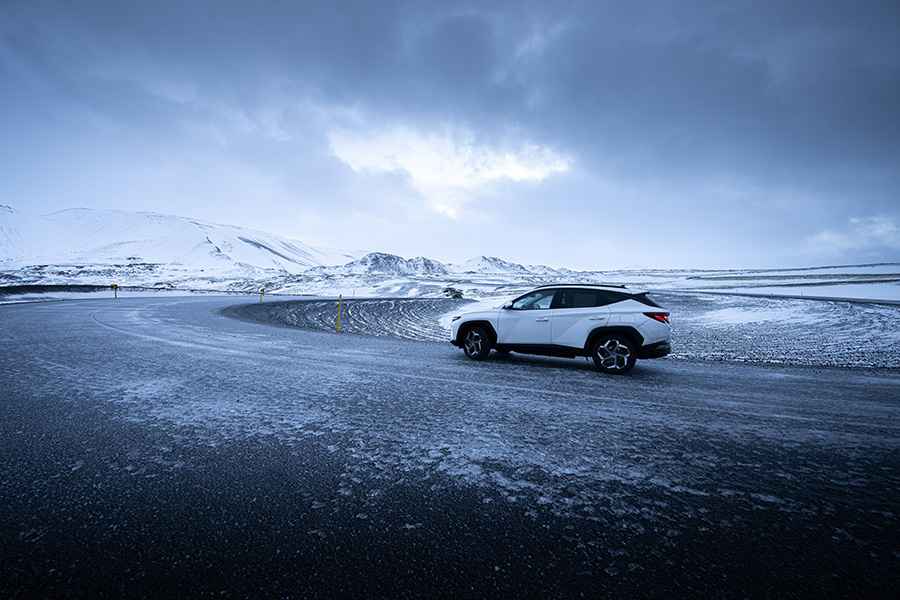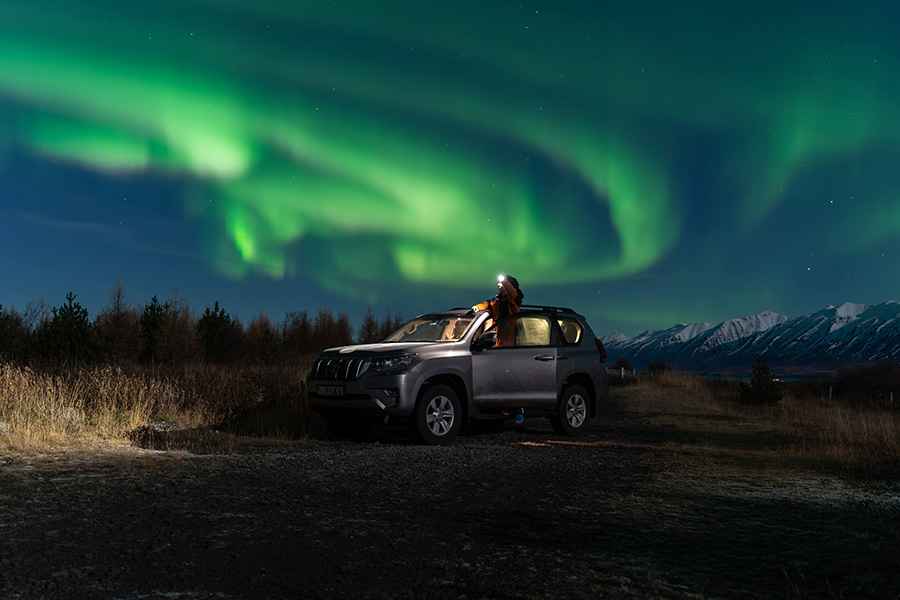Driving in Iceland in Winter: How to Enjoy a Safe and Magical Road Trip
Winter in Iceland is a season of quiet beauty. Snow blankets the mountains and lava fields, waterfalls transform into sparkling sculptures of ice, and the Northern Lights cast a green glow across the dark sky. For many travellers, it’s the most magical time to explore the country.

Driving gives you the freedom to experience Iceland at your own pace — but winter travel also means adapting to changing conditions. With the right mindset and vehicle, it can be a truly rewarding adventure.
1. Winter Roads Demand Attention — and Offer Rewarding Views
Iceland’s main roads, including the famous Ring Road, remain open year-round, but conditions vary from day to day. Snow, ice, and wind are common in the colder months, and it’s normal for stretches of road to feel challenging, especially in rural or coastal areas.
That said, the roads are regularly cleared and maintained, and information about closures or weather warnings is easy to access. Before setting out, check road.is for updates from the Icelandic Road and Coastal Administration and vedur.is for weather forecasts. With a little planning and patience, you can travel safely while taking in Iceland’s breathtaking winter scenery.

2. Some Regions Are Easier to Explore Than Others
In winter, the south and west of Iceland are the most accessible areas, offering stunning sights such as glaciers, waterfalls, ice caves, and geothermal lagoons. More remote regions, including the Highlands and parts of the Westfjords, are typically closed or difficult to reach due to heavy snow.
Focusing your route on the south coast or the Golden Circle gives you plenty of variety — and some of the country’s most unforgettable landscapes — without the need to tackle more demanding roads.
3. Cars Are Well Equipped for Winter Conditions
All rental cars in Iceland are fitted with studded winter tyres from November to mid-April, providing strong grip and stability on icy or snowy surfaces. These tyres make a big difference, helping to reduce slipping and improving control even in mixed conditions.
For extra confidence and versatility, a 4x4 in Iceland is a great choice. The added traction makes it easier to handle uneven or snow-covered roads, and the higher ground clearance improves visibility. Whether you’re navigating the countryside or simply want a smoother, steadier ride, a 4x4 adds comfort and peace of mind.
4. Drive Steadily and Enjoy the Journey
Winter driving in Iceland is not about speed — it’s about enjoying the experience. Drive slowly, keep a safe distance, and allow extra time to reach each stop. This approach not only keeps you safe but also lets you appreciate the scenery, from the snowy plains of the south to the glowing skies of the aurora season.
Daylight hours are shorter, particularly in December and January, so plan your drives for daylight and keep evenings free for relaxing or stargazing. The soft winter light creates ideal conditions for photography, making every stop along the road picture-perfect.
5. A Few Simple Habits Go a Long Way
Before you start your journey each day, clear snow and ice from your car’s windows and roof, check your route, and let the engine warm up for a few minutes. Keep essentials such as warm clothing, a torch, snacks, and a phone charger in the car.
These small habits make a big difference — and ensure you’re ready for anything the Icelandic weather might bring.

6. Embrace the Experience
Driving in Iceland in winter requires awareness and preparation, but it’s also one of the most rewarding ways to experience the country’s natural wonders. With studded tyres, a reliable 4x4, and a flexible plan, you can travel with confidence and discover Iceland’s quieter, more serene side.
So bundle up, take it slow, and let the open road lead you through a landscape of snow, light, and unforgettable beauty.